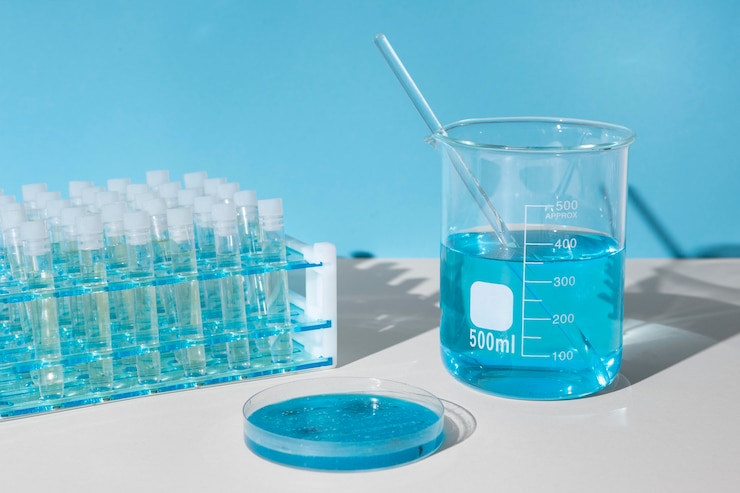Water quality assessment is an important topic for engineers and anyone who cares about the public’s health and the environment. It basically tells us the actual quality of our water resources, whether it affects the communities, industries, and ecosystems.
For those associated with engineering organizations in Pakistan, there is an absolute need to understand the basics. The article will discuss the essential aspects of water quality assessment and will enable you in taking the right decisions.
What is Water Quality?
Water quality refers to all the characteristics of water that determine its suitability for several uses, such as drinking, irrigation, and recreation. It generally encompasses a wide range of physical, chemical, and biological parameters in order to indicate whether the water is clean or polluted.

Key Parameters That Matter
Water quality is all about the knowledge of few parameters, which are temperate, pH, dissolved oxygen, and many more. Each of these parameters has its role in how water behaves and can be safely used.
Physical Parameters
1. Temperature
Water temperatures may affect chemical and biological activities. The warmer water will hold less oxygen, which will harm the fishes and other aquatic life.
2. Turbidity
It refers to the measure of how clear the water is. High turbidity means sedimentation or pollution, which in turn affects aquatic life by blocking sunshine and upsetting ecosystems.
3. Color and Odor
Water containing staining or having bad smell contains organic material or pollution. Identify these characteristics is important to make sure water safety.
Chemical Parameters

pH Levels
pH measures the acidity or alkaline of water. High and low pH water causes damage to aquatic living organisms and impacts chemical reactions, which are needed for aquatic systems.
Dissolved Oxygen
Most importantly, dissolved oxygen supports fish and other water animals. At low levels, quite a death and damage can take place in an ecosystem.
Nutrients: Nitrogen and Phosphorus
High nutrition concentration gives rise to algal blooms, which then deplete the oxygen and create toxic conditions for human life and aquatic too.
Heavy Metals and Pollutants
If lead and mercury seep into the water supply, they may eventually accumulate in fish, and affecting human health.
Biological Parameters

Bacteria and Pathogens
The presence of pathogenic bacteria is mostly indicative of water pollution, bad for human health if anyone use it or drinks it.
Algal Blooms
Algae growths bloom too fast and negatively affect aquatic ecosystems and water quality.
Aquatic Life Indicators
Some species of fish and plants are sensitive to change, making them a very good indicator of health of an ecosystem.
Water Quality Standards and Guidelines
WHO Guidelines
The World Health Organization (WHO) has given some guidelines on make sure safe drinking water, which affect the national and local standards.
EPA Regulations
In the United States, the Environmental Protection Agency regulates waterborne contaminants since they have effects on public health.
Local Standards
Regional authorities can implement localized regulations that are in tune with regional environmental conditions and community needs.
Importance of Regular Monitoring

Testing Frequency
Testing of water quality is important in determining the eventual changes over time. Their frequency depends on the source and use of water.
Sampling Methods
The right sampling ensures proper assessment. Even variable conditions in time, location, and weather also must be taken into consideration.
Data Interpretation
Better water management depends much on a higher level of understanding and interpretation of the data.
Tools and Techniques for Assessment

Laboratory Analysis
Laboratory tests indicate the composition of the water, which aids in detecting pollutants and the risk for health.
Field Testing Kits
With field kits, quick field assessments are possible; hence, concerns over water quality quickly get tackled.
Remote Sensing Technologies
Emerging technologies take up remote sensing because it allows monitoring of wide regions of water quality, that providing important data for effective management.
Impact of Poor Water Quality
- Decreased Oxygen Levels in Water
- Algal Blooms
- Toxic Contaminants in the Food Chain
- Spread of Waterborne Diseases
- Habitat Destruction
- Impact on Human Health
- Economic Loss
Water Treatment Methods
Filtration Techniques
Effective filtration is known to remove harmful contaminants and improve water quality for safe consumption.
Chemical Treatment
Chemical treatment removes the pollutants from water; that it is safe and healthy for public consumption.
Bioremediation
Using microorganisms to degrade pollutants is a sustainable method for restoring water quality.
Role of Engineers in Water Quality Assessment
Key Responsibilities
Engineers design systems that monitor and improve water quality. Engineers have lots of great work to do; challenging, indeed.
Collaboration with Other Professionals
However, water quality management is more effective if it co-operates with ecologists, public health experts, and policymakers.
Conclusion
Understanding water quality assessment is important for Engineering firms in Pakistan. Knowing what parameters really matter and getting proper assessment techniques working may become an important step toward more sustainable water management in your community. It’s time to act and put water quality on top of your engineering practice list.
Read more: